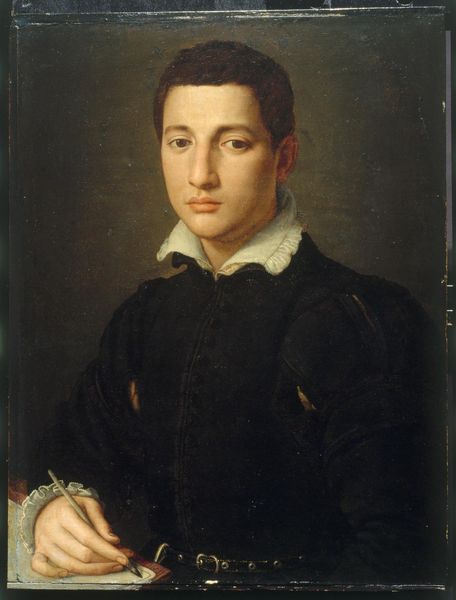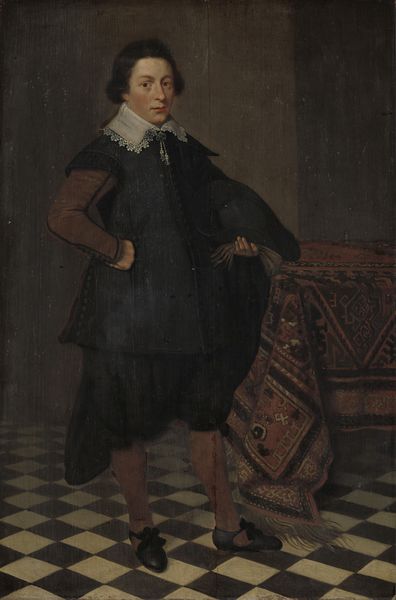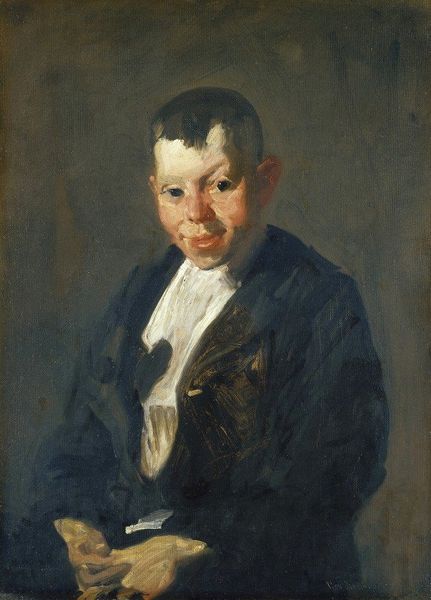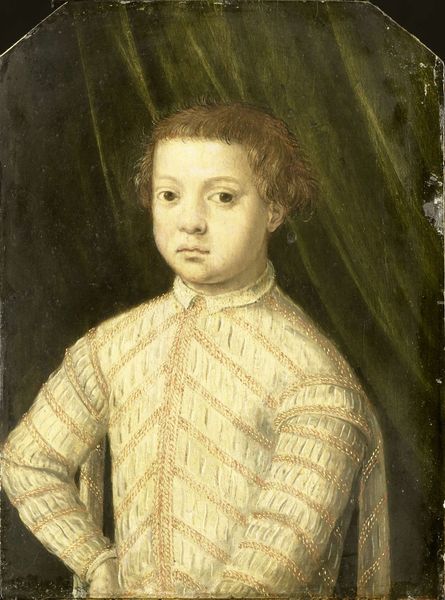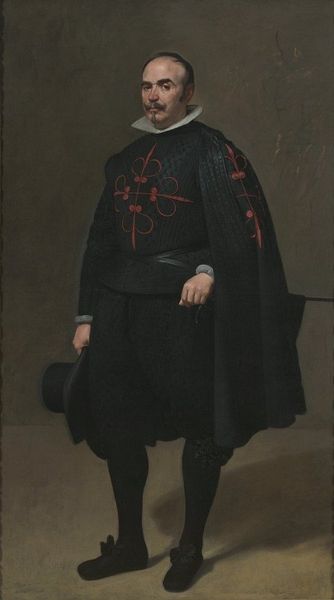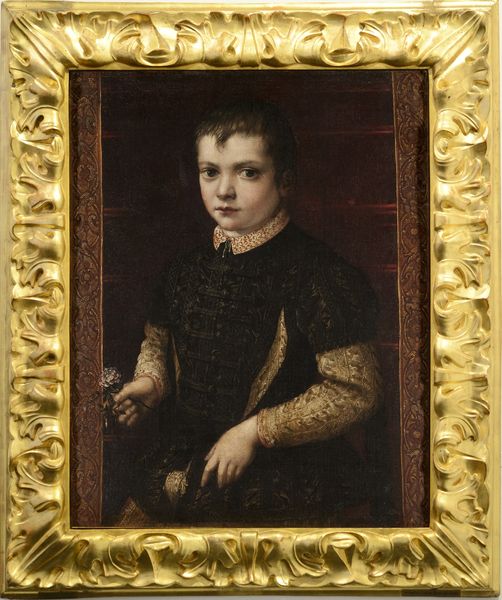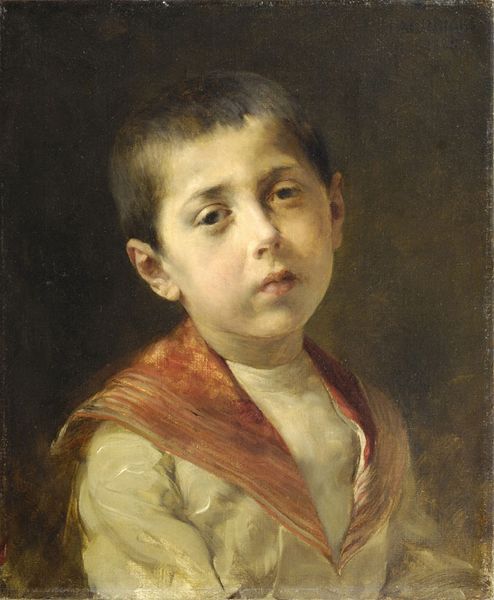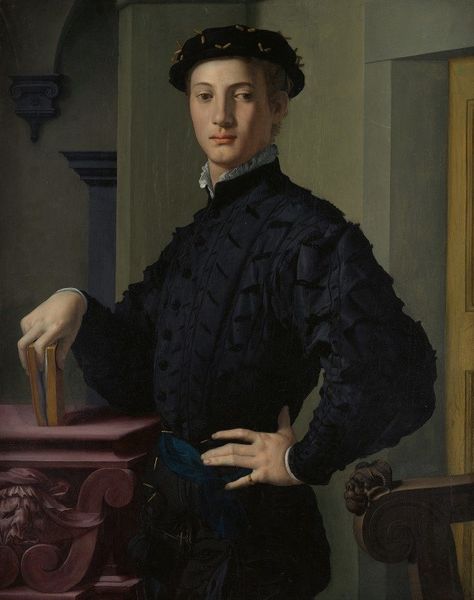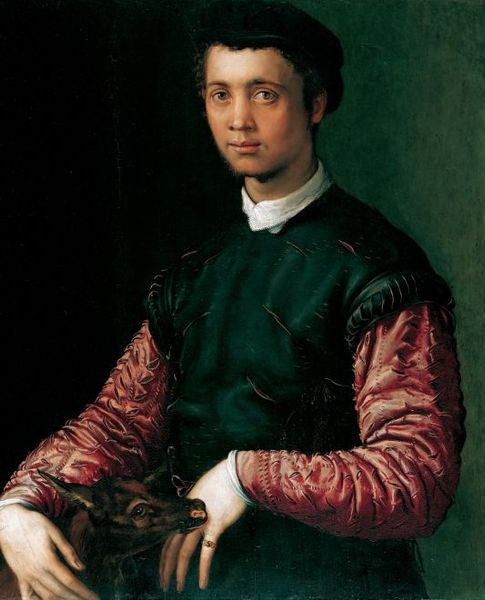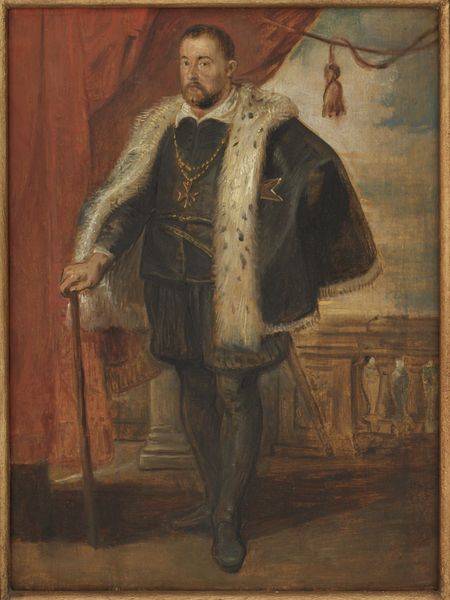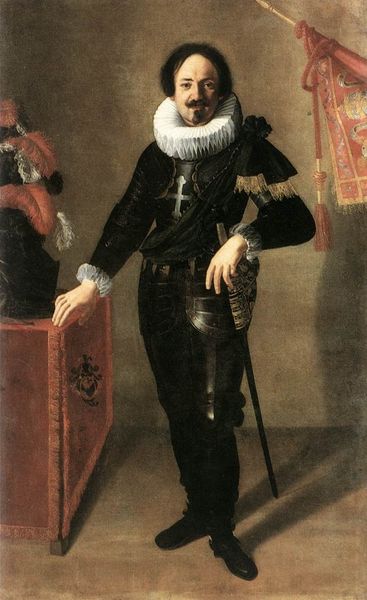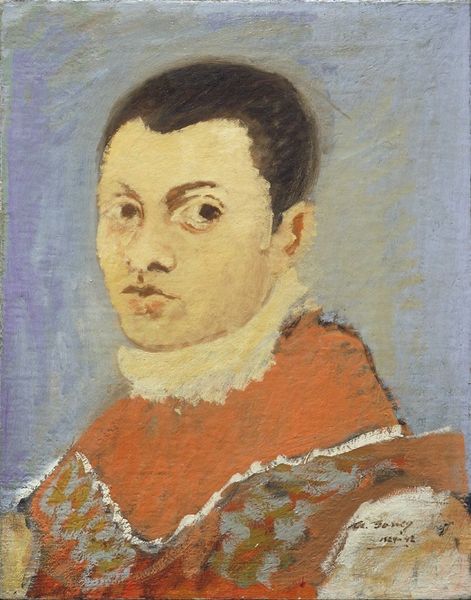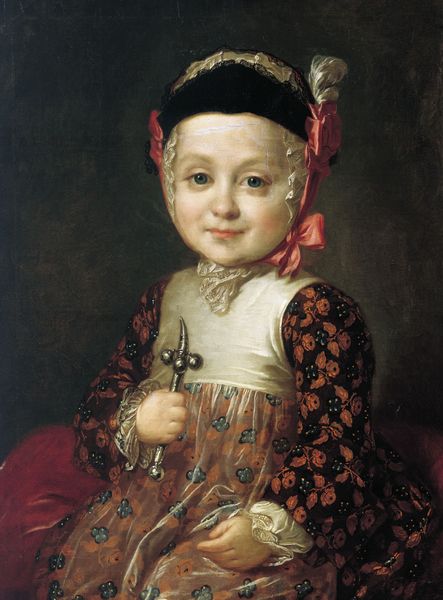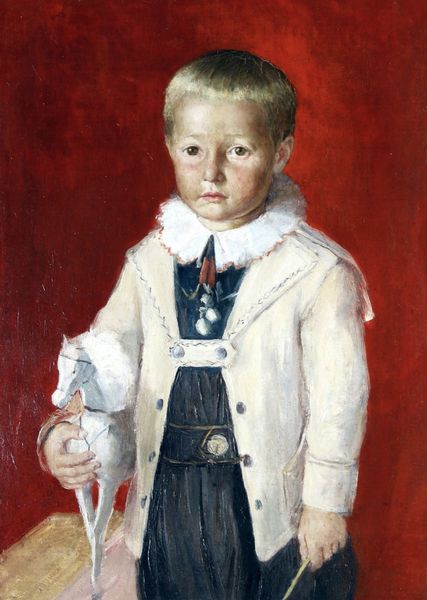
painting, oil-paint
#
portrait
#
figurative
#
painting
#
oil-paint
#
figuration
#
history-painting
#
italian-renaissance
Copyright: Public Domain: Artvee
Curator: We're standing before Titian's "Ranuccio Farnese," painted between 1541 and 1542, a compelling portrait rendered in oil paint. Editor: It's striking how the somber, almost murky background throws that vibrant red tunic into such sharp relief. The boy seems caught between worlds, unsure of his power, but still... powerful. Curator: Absolutely. Red is a loaded color, traditionally linked with power, royalty, and sacrifice. Here, on Ranuccio, a young member of the Farnese family, it broadcasts their status. But that specific shade, tinged with pink highlights the delicacy and vulnerability of youth. It mirrors the societal expectations placed upon him. Editor: The eye is undeniably drawn to the intricate details of the clothing – the subtle play of light on the fabrics. It creates texture, depth and ultimately pulls you into the artwork. I am immediately captured by the sword on his side; the light dances on it making a stark counterpoint to the boy's soft features. It feels so deliberate. Curator: Precisely. Remember the cultural context: this wasn’t merely a likeness, but an assertion of lineage, of the family’s strength made all the more potent through potent symbolic additions, from the Maltese cross, an indicator of noble pedigree. It served to bolster the family's influence at a turbulent time. It hints at Ranuccio's future role, maybe even as a leader, embedding him into a legacy narrative. Editor: Yes, but looking closer, doesn't the slightly awkward posture and the tentative grip on what I suppose is a piece of cloth somehow betray the imposed grandeur? I mean, there is this palpable tension between presentation and his youth— a rawness the painting does well to capture through subtle shifts of colour on his face. Curator: That's a fantastic point. The portrait captures a liminal state; Ranuccio is poised, he's inheriting a destiny he’s just barely starting to understand. Editor: So the formal brilliance underlines that underlying message about a pivotal time of life and cultural transmission. The artist seems quite conscious about constructing him both in the family image and his own as an individual. Curator: Yes! And that visual paradox makes it incredibly relatable. Editor: Absolutely. The artwork stays with you – its formal devices serving something humanly felt about identity.
Comments
No comments
Be the first to comment and join the conversation on the ultimate creative platform.
